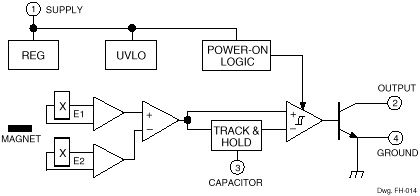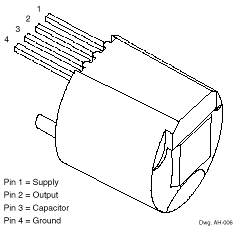The ATS610LSA and ATS611LSB have been phased out of production as of May 1, 2006.
For new customers or new applications, please refer to ATS617.
Features and Benefits
- Fully Optimized Differential Digital Gear-Tooth Sensor IC
- Single-Chip Sensing IC for High Reliability
- Extremely Low Timing Accuracy Drift with Temperature
- Large Operating Air Gaps
- Small Mechanical Size
- Optimized Magnetic Circuit
- Patented Peak-Detecting Filter:
<200 µs Power-On Time
<10 RPM Operation (single-tooth target)
Correct First-Edge Detection
Uses Small Value Ceramic Capacitors - Under-Voltage Lockout
- Wide Operating Voltage Range
- Defined Power-Up State
Description
The ATS610LSA and ATS611LSB gear-tooth sensor ICs are optimized Hall IC plus rare earth pellet devices providing a user-friendly solution for digital gear-tooth sensing applications. Each device combines in a compact high-temperature plastic package, a samarium-cobalt pellet, a pole piece, and a differential Hall-effect IC that has been optimized to the magnetic circuit. These devices can be easily used in conjunction with a wide variety of gear or target shapes and sizes.
The ATS610LSA is designed to provide increased immunity to false switching in applications that require the sensing of large-tooth gears (e.g., crank angle or cam angle). The ATS611LSB is optimized to sense fine-pitch gears over large working air gaps (e.g., transmission or ABS). These devices are ideal for use in gathering speed, position, and timing information using gear-tooth-based configurations.
The technology used for these IC plus rare earth pellet devices is Hall-effect based. The IC incorporates a dual-element Hall IC that switches in response to differential magnetic signals created by the ferrous target. The circuitry contains a patented track-and-hold peak-detecting circuit to eliminate magnet and system offset effects. This circuit has the ability to detect relatively fast changes, such as those caused by gear wobble and eccentricities, and provides stable operation at extremely low rotation speeds.
Functional Block Diagram




